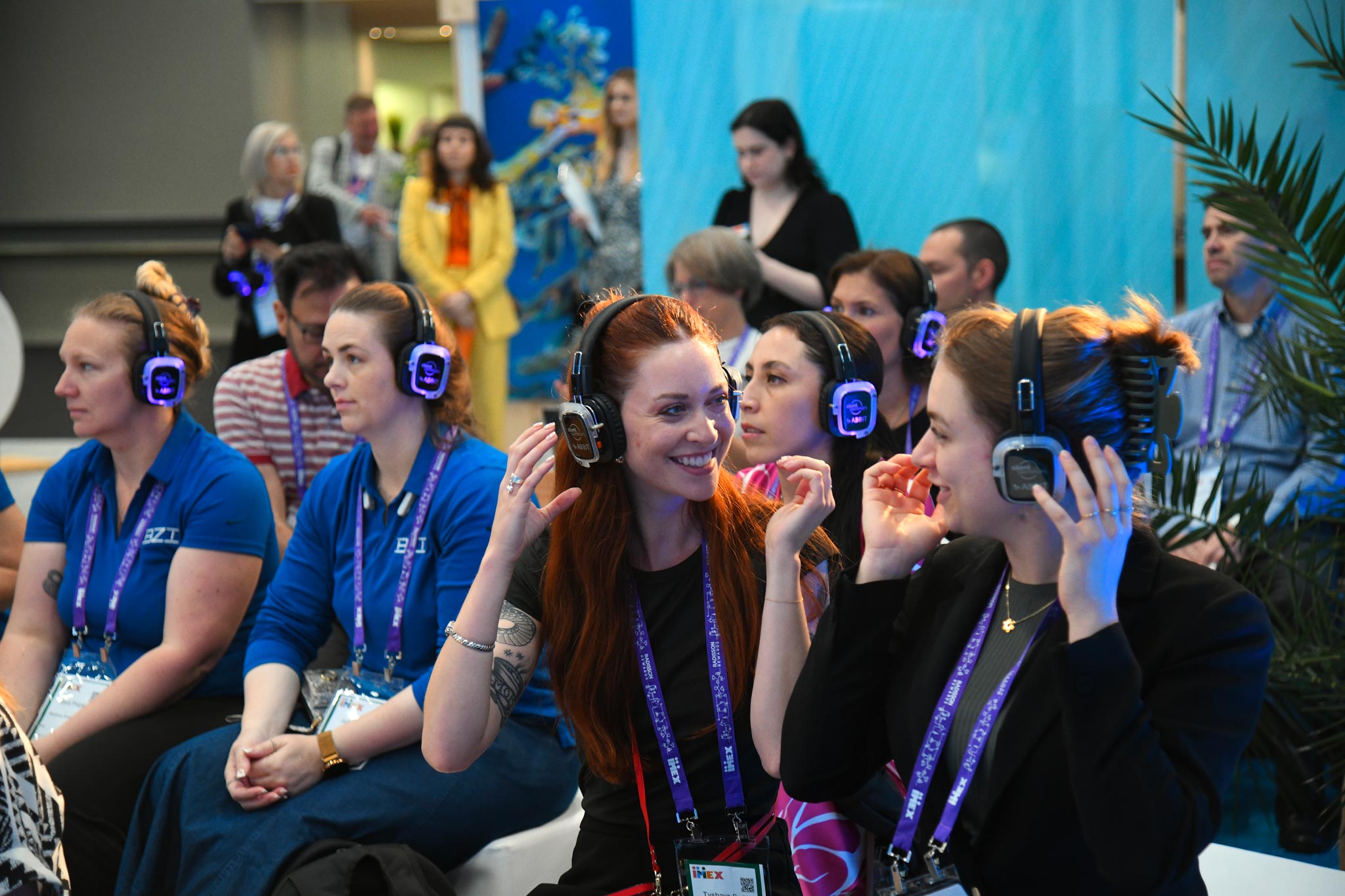With hybrid event formats surging, meeting planners increasingly looking for more dynamic conference sessions, and attendees’ general attention spans shrinking, event content programmers are growingly looking to implement more interactive educational opportunities. The practice of gamification, introducing game-based mechanics into learning and development efforts of every type, offers a means of addressing these needs and readily boosting audience engagement and takeaway.
To adapt to these shifting industry trends and teach audiences the skills that they need to thrive in fast-changing business environments, it’s clear that new learning approaches and models are called for. Looking to meet the challenge, we’ve designed a new series of board games designed for play at meetings and events, including ‘What’s the Future of Finance?’, ‘What’s the Future of Insurance?’, and ‘What’s the Future of Healthcare?’. Each one of them invites players to tackle real-world challenges (labour shortages, supply chain disruptions, etcetera) in a more approachable and exciting fashion than traditional classroom offerings. After sharing and hosting training sessions for hundreds of brands as futurist keynote speakers, here’s what we’ve learned about creating more impactful meetings and events from these efforts.
Human connections are critical Both event hosts and attendees always look for inviting ways to break the ice at meetings or conventions, and informal, team-based challenges allow audiences of all backgrounds, roles, and skill levels to more readily socialise and participate. Before starting to play our games, for instance, audiences are separated into tables of 5–8 persons, with chairs divvied up amongst folks from different areas of the business or larger industry, most of whom have had little, if any, prior interaction. As the play progresses, conversations and brainstorming around these tables provide a handy way to bridge the gap between generations, functions, and departments, invite everyone to participate, and present a ready excuse for conversation. Moreover, by giving everybody at the table a chance to shine and show their talents, it reminds participants that no matter how accomplished or experienced we are, we can all learn from one another and that any given individual’s practical skills may, in actuality, extend far beyond those we see them get to use in their day-to-day job role.
Hands-on learning is best Having served as futurist keynote speakers and thought leaders for thousands of brands, we’re no strangers to delivering formal keynotes and masterclasses. But from an audience perspective, learning by doing and being tasked with solving realistic challenges in practical contexts vastly boosts attendee learning, takeaway, and retention far beyond anything that listening to an expert pontificate on stage for 45–90 minutes could provide. On top of that, by introducing practical constraints to interactive training exercises, such as specific scenarios to play through and time limits, participants are forced to focus on what matters most: Finding valuable ways to solve any given problem as quickly as possible. It helps sharpen convention-goers’ focus and eliminates the distractions that often lead to “paralysis by analysis” in everyday environments. Likewise, engagement in meaningful activities and interactions proves far “stickier” in the viewer’s mind, leading to lasting memories and “a-ha” moments whose impact resonates far beyond day-of-session programming.
“The journey to reach a workable approach is more important than the ultimate destination”
Everyone is an innovator In the ‘What’s the Future of …?’ games, there’s no right or wrong way to solve a problem. Instead, there are many possible strategic tacks to take, and the journey to reach a workable approach is more important than the ultimate destination. That’s because not only does the game remind players that innovation isn’t the exclusive domain of any role or department, but every working professional can be more creative when we make a point to exercise our imagination more actively. It also actively exposes players to other people’s ways of thinking, processing ideas, and tackling problems, and by watching how others solve challenges, players can discover new strategic tools and techniques to add to their toolbox. In other words, the play reminds participants that great ideas can come from anywhere, anytime and that we all have things to learn from one another. In fact, one of the greatest joys of training sessions is watching the most junior interns and senior executives pick up hints, tips, and ideas from one another.
Asking questions is paramount Trade Secret: A futurist doesn’t predict the Future. Instead, by studying the state of the market and society, we identify emerging trends and challenge our clients to think about how these breaking developments might impact their organisation. As part of game-based learning programs, players are naturally forced to brainstorm, assess, and advance or dismiss ideas in an accelerated period. On the one hand, that requires them to distil challenges down to their base essence and think about managing better-limited resources, including not just finances but also capabilities, workforce, and time. On the other hand, it causes them to get in the habit of asking more questions, more routinely, and in a more rapid-fire fashion, precisely as a professional futurist might do. In effect, the play is centred around asking more what-if questions, just as successful innovators would in a corporate setting.
Permission to experiment matters As a starting point in gameplay sessions, it may interest you to learn that we put players in charge of fictional companies and brands whose profiles look remarkably similar to their employer, minus the actual branding. This simple shift in perspective allows folks to speak up and voice ideas, insights, and opinions that may never be floated, or fly under the radar, in a more formal corporate setting. Moreover, we also ask players to whiteboard any concepts, ideas, strategies, and trends they come across or come up with as part of their discussions. On the back end, these points of interest or concern often fuel new corporate ventures, pilot programs, or innovation initiatives in the future. In effect, whether they consciously realise it or not, players can examine and explore their current work and organisational scenario from fresh perspectives and may produce game-changing ideas.
That said, it’s clear that players learn best by doing, rather than simply hearing a presenter talk at them. More interactivity in training exercises helps serve as a helpful icebreaker and networking activity and creates a more welcoming atmosphere for meeting participants. Whatever training tools and strategies you use to build a conference or convention program in the future, we can’t stress enough that audiences learn most effectively from one another when given the means and methodologies to arrive at their solutions.



